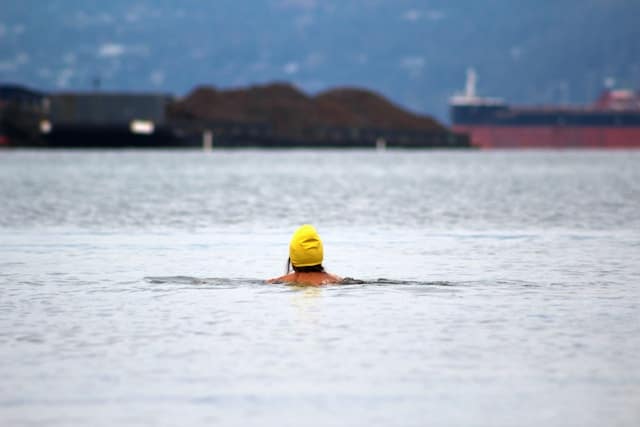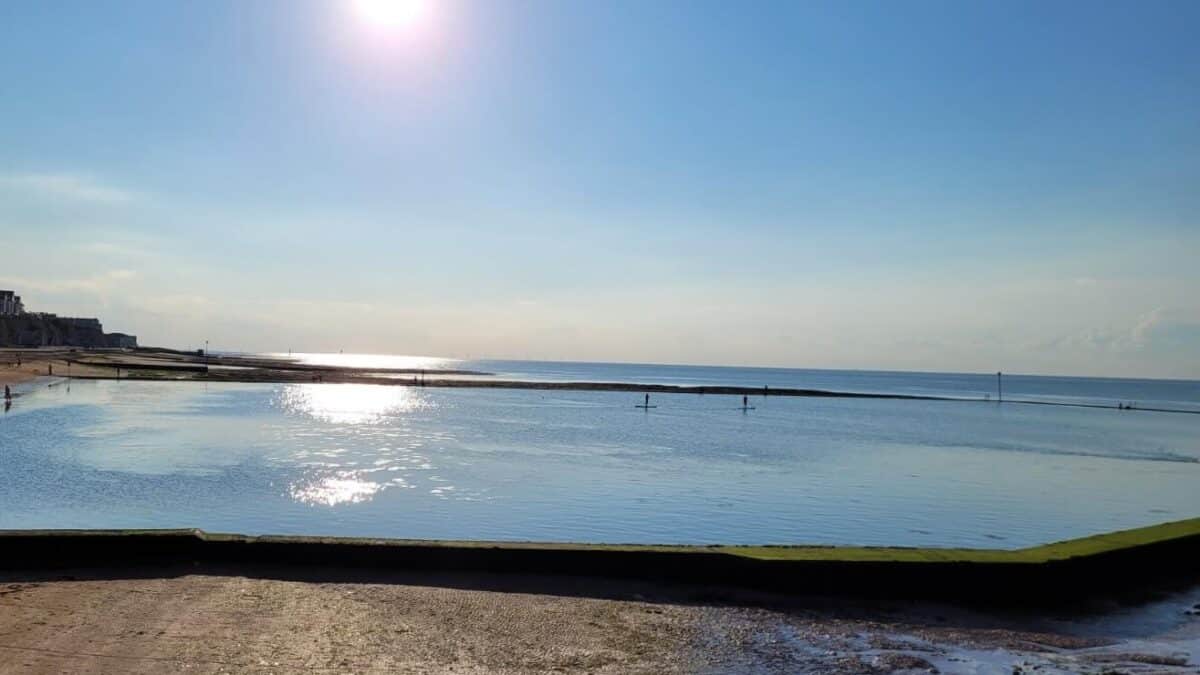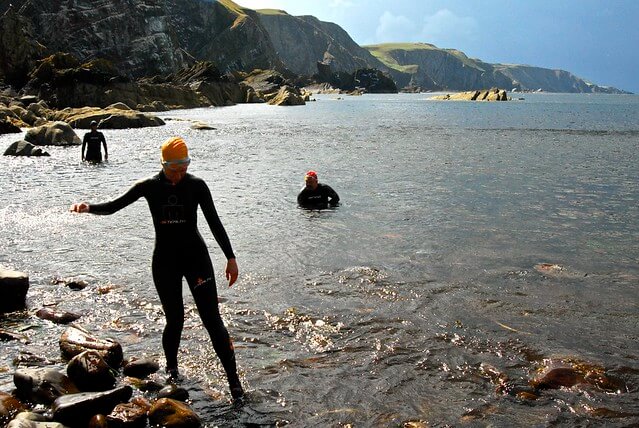At the time of writing (early April), spring is finally getting into full swing and the temptation to get back in the water (if you’re not a year-round swimmer!) is certainly growing. Yet despite air temperatures rising, water temperatures, particularly in the sea, remain pretty low and in some cases, are at the lowest temperatures all year.
We’ve done a series of articles in recent months on the topic of cold water swimming in general, which we’ll sum up at the end of this article. However, we’d like to use this post to address safety around cold water swimming in general and when to know whether it’s too cold for a dip and how your body may react to certain temperature thresholds.
Remember, safety is paramount at all times when it comes to wild swimming!
Determining the Threshold of Cold Water Swimming
While individual tolerance varies, several factors influence the ideal temperature for cold water swimming:
- Water Temperature: Experts generally consider water temperatures below 15°C (59°F) as cold water. Below this threshold, the risk of hypothermia increases significantly, especially during extended swims.
- Acclimatisation: Regular exposure to cold water can enhance cold tolerance by triggering physiological adaptations, such as increased fat metabolism and improved circulation. However, even well-acclimated swimmers should exercise caution in extremely cold conditions.
- Duration of Exposure: Shorter swims in colder water are generally safer than prolonged immersion. A brief dip may offer a refreshing jolt to the system, while extended stays increase the risk of hypothermia.
- Individual Factors: Factors such as body composition, age, and overall health influence cold tolerance. Lean individuals may lose heat more rapidly than those with higher body fat, while older adults and individuals with pre-existing health conditions may be more susceptible to cold-related risks.
Cold Water Swimming: the Physiology
It’s essential to understand how the human body responds to cold water immersion. When submerged in cold water, blood vessels near the skin constrict, diverting blood flow to vital organs to maintain core temperature. This initial response, known as the cold shock response, can trigger gasping and hyperventilation, posing a risk of water inhalation.
As the body continues to adapt, it enters a stage of cold incapacitation, where fine motor skills decline, and muscle strength diminishes. Prolonged exposure can lead to hypothermia, a potentially life-threatening condition characterized by dangerously low body temperature.
Cold Water Swimming Safety Guidelines
To ensure a safe and enjoyable cold water swimming experience, consider the following guidelines:
- Know Your Limits: Listen to your body and recognize signs of discomfort or distress. If you experience numbness, shivering, or confusion, exit the water immediately and warm up.
- Dress Appropriately: Wear a high-quality wetsuit or insulated swimwear designed for cold water conditions. Protect extremities with neoprene gloves, booties, and a swim cap to minimize heat loss. Make sure you’ve got all the relevant wild swimming gear needed for cold water swimming.
- Buddy System: Never swim alone in cold water. Swim with a companion who can provide assistance in case of emergency and monitor each other for signs of hypothermia.
- Gradual Entry: Ease into cold water gradually to allow your body to acclimate to the temperature changes. Avoid sudden immersion, which can trigger the cold shock response.
- Warm-Up Afterwards: After completing your swim, promptly dry off and change into warm, dry clothing such as a swimming robe. Consume warm fluids and seek shelter from the elements to prevent further heat loss.
While the allure of cold water swimming beckons adventurers year-round, understanding the threshold of cold tolerance is essential for safety and enjoyment. By considering factors such as water temperature, acclimatization, and individual differences, swimmers can navigate cold water environments responsibly and reap the rewards of this exhilarating activity. Remember, the key is to embrace the cold while respecting its potential risks, ensuring a memorable and fulfilling experience for all who dare to take the plunge.
Read more on cold water swimming:
Cold Water Swimming: What Gear Do I Need?




